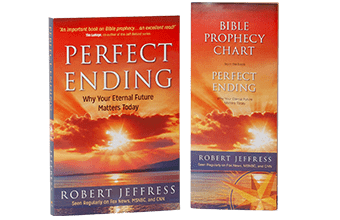He appeared to Cephas, then to the twelve. After that He appeared to more than five hundred brethren at one time . . . then He appeared to James, then to all the apostles; and . . . He appeared to me also.
–1 Corinthians 15:5-8
Every time I go to Israel, I am amazed at what a small country it is. Did you know the nation of Israel is about the size of New Jersey? Yet this tiny country for thousands of years has been the epicenter of world conflict. Why is there so much controversy around Israel? The answer is clear when you know history. The three largest world religions–Judaism, Islam, and Christianity–all claim Israel as the site for some of their most important events. But there’s one thing that differentiates these three world religions: Abraham, the founder of Judaism, died in 858 BC and was buried in a cave at Machpelah. Mohammed, the founder of Islam, died in AD 632 and was buried in Medina. Jesus Christ, the founder of Christianity, died and was buried on April 3, AD 33, in the tomb of Joseph of Arimathea, but three days later Jesus rose from that tomb and conquered death forever. That’s what makes Christianity different from every other religion.
How do we know Christ rose from the dead? Let’s look at the evidence of eyewitnesses. Eyewitness testimony has long been considered one of the most reliable forms of evidence. What is the eyewitness testimony of the resurrection of Jesus Christ? In 1 Corinthians 15:5, Paul wrote, “[Christ] appeared to Cephas.” Cephas was the apostle Peter. Isn’t it interesting that the first person Jesus appeared to in His resurrected form was Peter, the one who just a few days earlier had failed so miserably and denied the Lord? Isn’t that gracious of the Lord? He doesn’t hold our trespasses against us; He forgives us. He appeared to Peter first, “then to the twelve. After that He appeared to more than five hundred brethren at one time” (vv. 5-6). Matthew talked about that event as well. And Paul said most of the witnesses were still alive. A few had died, but most of them were still alive. You could go talk to them. Then Jesus appeared to James, His half-brother. James as well as all of Jesus’s family refused to believe in Him while He was alive, but James became a believer after he saw his resurrected brother. Then Jesus appeared to Paul, the apostle said, “last of all, as to one untimely born” (v. 8). He appeared to Paul on the road to Damascus. That is the evidence for the resurrection.
Simon Greenleaf was a professor at Harvard whose specialty was legal evidence. He was also an unbeliever, and he decided to disprove Christianity by disproving the resurrection. He applied the laws of legal evidence to the claims of the resurrection. After he spent years searching the evidence, he became so convinced of the historicity of the resurrection that he became a Christian. You don’t have to give up your intellect to become a Christian. The Christian message is not based on feeling; it is based on fact. Paul said that is the certainty of the resurrection.
***
Today’s devotion is excerpted from “If Jesus Is Dead, So What?” by Dr. Robert Jeffress, 2019.
Scripture taken from the NEW AMERICAN STANDARD BIBLE®, Copyright © 1960,1962,1963,1968,1971,1972,1973,1975,1977,1995 by The Lockman Foundation. Used by permission.
